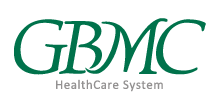Vaginal Uphold Hysteropexy and Laparoscopic Sacral Hysteropexy for the Treatment of Uterovaginal Pelvic Organ Prolapse
| Status: | Completed |
|---|---|
| Conditions: | Women's Studies |
| Therapuetic Areas: | Reproductive |
| Healthy: | No |
| Age Range: | 40 - 75 |
| Updated: | 6/15/2016 |
| Start Date: | June 2011 |
| End Date: | December 2015 |
The purpose of this study is to evaluate surgical success or failure one year after surgery
for pelvic organ prolapse.
for pelvic organ prolapse.
This will be a prospective parallel cohort study comparing a laparoscopic sacral hysteropexy
(LSHP) to a vaginal Uphold hysteropexy (VUHP). Symptomatic and anatomic improvement of
pelvic organ prolapse will be evaluated at 3 months and 1 year.
(LSHP) to a vaginal Uphold hysteropexy (VUHP). Symptomatic and anatomic improvement of
pelvic organ prolapse will be evaluated at 3 months and 1 year.
Inclusion Criteria:
- Desires surgical treatment for uterovaginal prolapse.
- Symptomatic stage II-IV POP including:
- cystocele (AA or BA > or = 0) by POP-Q and
- apical descent below the mid-vagina (point C > -(TVL / 2)) by the POP-Q and
- a positive response to questions 3 of the PFDI 20: Do you usually have a bulge or
something falling out that you can see or feel in the vaginal area? (Appendix A)
- Eligible for and undergoing one of the following procedures: laparoscopic sacral
hysteropexy (LSHP) or Vaginal Uphold hysteropexy (VUHP)
- Female age 40 to 75.
- Completed childbearing confirmed by subject or practicing reliable form of birth
control defined as permanent sterilization, hormonal contraception, abstinence, IUD.
- Normal size uterus (length less than 10 cm) on bimanual exam or ultrasound within the
past 6 months.
Exclusion Criteria:
- Prior hysterectomy.
- Patient with synthetic material placed to augment previous pelvic organ prolapse
repair. (previous prolapse repair without synthetic mesh is acceptable).
- Current vaginal or pelvic foreign body complications (including but not limited to
erosion, fistula, abscess). This includes foreign bodies of any type (e.g. synthetic
and biologic including allograft, xenograft).
- Desires hysterectomy at the time of prolapse repair.
- Cervical elongation with anticipated need for cervical shortening at the time of
prolapse repair as determined by surgeon.
- History of cervical dysplasia (diagnosed within the past 5 years) or increased risk
of cervical dysplasia (HIV, immunocompromise, DES exposure), chronic pelvic pain,
uterine abnormalities (symptomatic uterine fibroids, polyps, endometrial hyperplasia,
cancer) or any uterine disease that would preclude prolapse repair with uterine
preservation in the opinion of the surgeon.
- Any postmenopausal bleeding in the past 12 months (regardless of endometrial biopsy
or ultrasound results) or any postmenopausal bleeding more than 12 months prior
without adequate evaluation in the opinion of the investigator.
- Premenopausal women with menstrual issues including irregular bleeding, menorrhagia,
dysmenorrhea,
- Pregnancy (confirmed before surgery with a pregnancy test).
We found this trial at
8
sites
The Christ Hospital For more than 120 years, The Christ Hospital has been a leader...
Click here to add this to my saved trials
Cleveland Clinic Cleveland Clinic is committed to principles as presented in the United Nations Global...
Click here to add this to my saved trials
Greater Baltimore Medical Center The 255-bed medical center (acute and sub-acute care) is located on...
Click here to add this to my saved trials
Click here to add this to my saved trials
Click here to add this to my saved trials
Stanford University Stanford University, located between San Francisco and San Jose in the heart of...
Click here to add this to my saved trials
Click here to add this to my saved trials
Click here to add this to my saved trials



